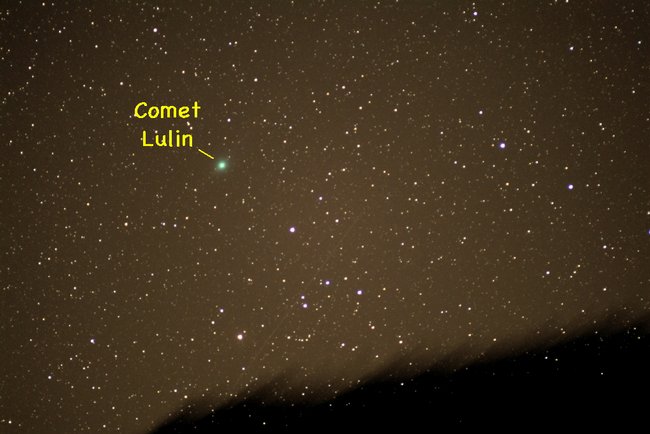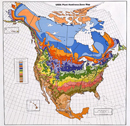
Two highly auspicious astronomical events are occurring right now that everyone should be made aware of. We have a highly unusual green comet from deep space in our midst and a second moon for earth.
Historically comets are thought to portent severe change and are often thought of as the grim reaper. The facts that this comet is green, from unknown origin, orbits the sun counter to all the other planets and has a large atmosphere three times the size of Jupiter are significant. Per astronomers, it may also develop twin tails.
A 10km, (6.2 mile) diameter asteroid suddenly captured by earth as a second moon is quite unusual and auspicious. Expected to be with us for over a year is it really an asteroid or something else? With our current knowledge of torsion field energy we may be seeing influences on our emotions and behavior.
Fortunately Comet Lulin will be making its closest approach to earth during the new moon. (On its return to deep space) An observers group will be driving out to the western bluff of the Belen Mesa on Monday evening, (Feb. 23rd) to experience this once in a lifetime event. We will be using telescopes, binoculars, digital cameras and green lasers. In addition to viewing the comet we will be photographing orbs and viewing the very prevalent UFOs and alien spacecraft activity. I hope that you can join us. Below is a copy of the science press release. Enjoy! Gary 🙂
What might be the best naked-eye comet of the year is approaching the Earth and growing brighter every day. It’s Comet Lulin, named for the Chinese observatory where it was discovered in 2007.
The new comet’s formal name is Comet C/2007 N3. The new comet will be the brightest towards the end of the month. The comet will be a magnitude 5 or 6 in brightness. It is rather large in size with an “atmosphere” of emitted particles (called a coma) three times the diameter of Jupiter. The atmosphere consists of cyanogen (CN) and diatomic carbon (C2), gases that glow green when exposed to the light of the sun.
Comet Lulin currently is in the constellation of Libra, rising about 4 a.m., but as we progress through January and February, the comet will move through the constellations of Virgo and Leo and will rise at the much more reasonable hour of 7 p.m.
Perhaps the most interesting aspect of Comet Lulin is its unusual orbit around the sun. Although it orbits in nearly the same plane that the Earth does, it does so backwards. Earth and all of the major planets orbit the sun counterclockwise as viewed from above Earth’s North Pole, but Comet Lulin is going against the flow, moving around the sun in a clockwise direction. Because it is moving in the opposite direction that Earth moves, the two will pass each other at the breakneck speed of nearly 40 miles per second, or 140,000 miles per hour.
On the night of closest approach to Earth, Feb. 24, Comet Lulin will be moving at an astounding 5 degrees per day across our line of sight. Its motion against the background stars will be evident through a small telescope or even binoculars.
Another fascinating aspect of Comet Lulin’s orbit is that it is parabolic rather than elliptical. That means that Comet Lulin doesn’t make regular, periodic visits to the inner solar system, but it is in an orbit so large that this might be the very first time it has passed through the inner solar system and felt the warmth of the sun on its solidly frozen ices. Consequently, predicting the behavior of this newcomer is speculative at best. So far, it has been at or slightly ahead of its theoretical brightness curve. If this trend continues, Comet Lulin is expected to reach fourth magnitude at its peak. That’s bright enough to be seen with the unaided eye from dark, rural locations.
A pair of ordinary binoculars always enhances your view of a comet, and on the night of closest approach, Feb. 24, Comet Lulin and the bright planet Saturn will be in the same binocular field of view, providing an unforgettable sight.
For regular updates on Comet Lulin, check out the NASA Web site www.SpaceWeather.com
But comet Lulin isn’t the only visitor from space.
Barely two weeks ago a 10km wide asteroid came within twice the distance to the moon. This asteroid called 20091313, will follow the Earth for at least a year and will then again disappear into space.
So for a short while the Earth has actually two moons, although one is very small. Had this asteroid hit the Earth it would have impacted with the same force as the atomic bomb that exploded over Hiroshima. To make sure this does not happen astronomers constantly survey the sky for Near Earth Objects (NEOs).





